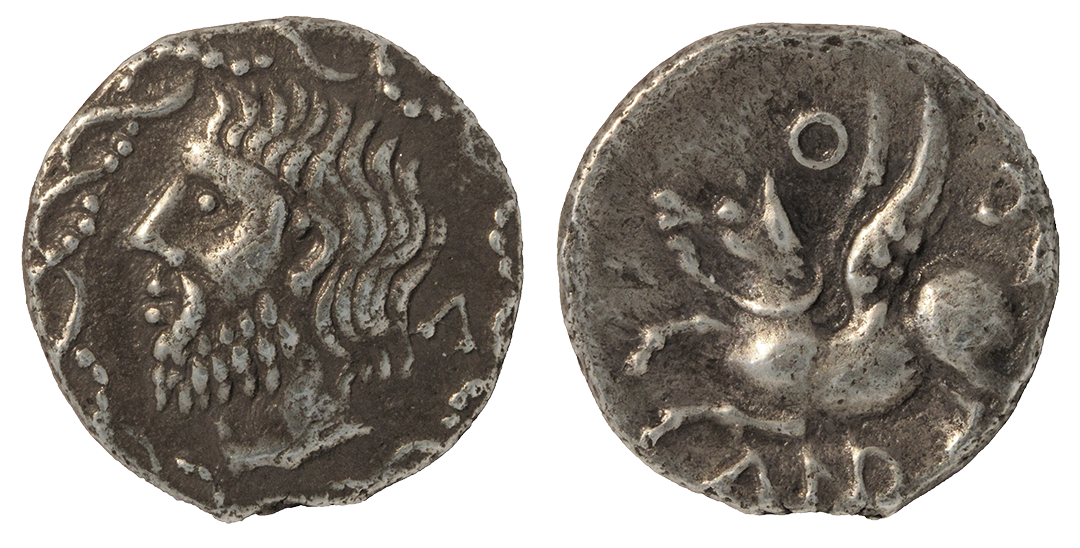
Numismatic Articles
Van Arsdell 2018a (Info)
Modern Celtic Fakes 10 – A treacherous Andoco fake
By Robert D. Van Arsdell
Introduction
The coin above, an Andoco Silver Unit, first appeared in a trade list in 2008 (info). It later reappeared in 2015. In photos, it looked like an attractive example of V1868 and showed unusual details that would attract the interest of researchers.
The coin held out the promise of new information about the operations of a Celtic mint. The dies for the coin were seemingly cut by a new die-cutter. The style of a genuine coin in the British Musuem (info) is different from the coin above. It appeared that this would be one of the rare instances in which two die-cutters worked on a such a small issue. It might have told us something about the way die-cutters were trained in a British mint.
Of more importance, it appeared that the die-cutter had recut the dies to improve the imagery – an unusual occurence. Celtic die-cutters normally cut their dies just once. The dies were then used until they wore out or were no longer needed. Examples of recut dies are so rare that when they are identified, they prompt publication (info). In the Andoco case, coins struck from "improved dies" were suspected to exist and the details of this needed confirmation and study.
It would have been easy for a researcher, working only from photos, to have written an intriguing article about the operations in a Celtic mint. Fortunately, no such article would be written – for the coin is a modern forgery. The coin's treacherous because it lies to us about the organization of a Celtic mint.
By now, researchers should know that the first step in coin analyis is authentication.
Hidden Die-Cutting Errors
The Andoco is struck from dies. With a simple 2X magnifying glass, it looks good enough to pass as genuine. With a 10X Hastings Triplet Loupe, the die-cutting errors can just be seen, if one knows where to look for them. However, at 50X, the stereo microscope reveals that the die-cutting is completely spurious.
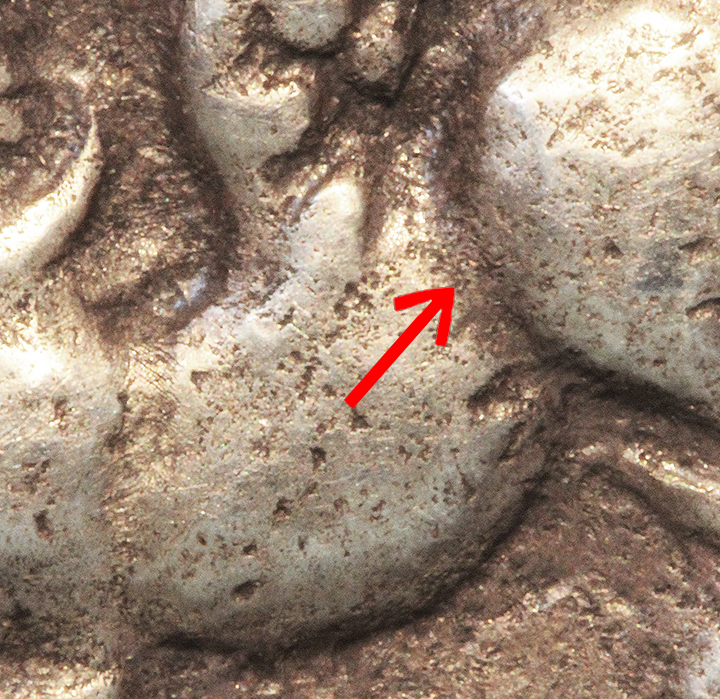
The coin appears to be painted with varnish or a brown-coloured paint. This should always be taken as suspicious, warranting a closer look. In this case, the coating was carefully applied to the low areas of the image – perhaps to hide some die-cutting errors. The arrow shows a place where the coating appeared to be hiding a die-cutting "mess" between the Pegasus' mid section and hind quarters (arrow). The die-cutter had possibly tried to cover up his (or her?) tracks. The coating did a good enough job such that the "mess" can't be seen in the photograph.
Fortunately, the stereo microscope reveals many areas where the forger failed to add enough coating.
Graver Slip
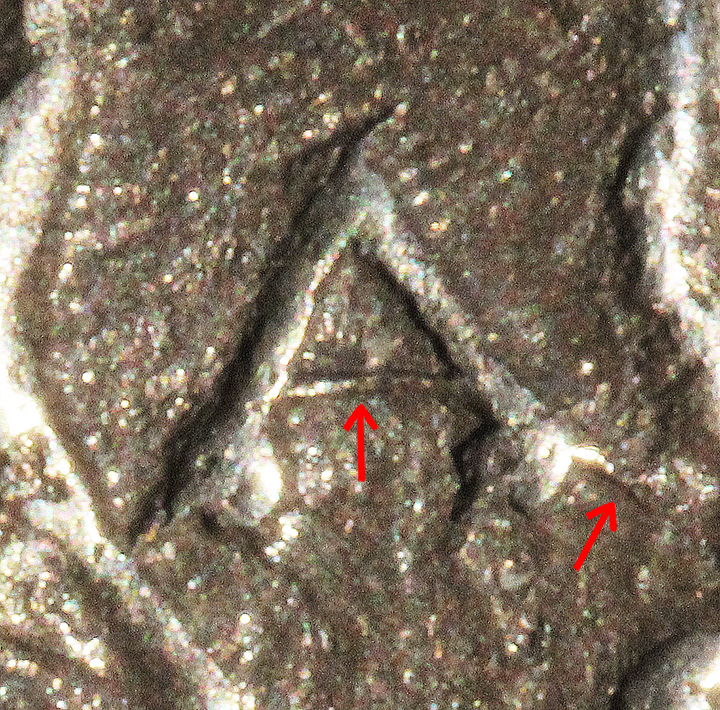
The die-cutter slipped when cutting the crossbar of the "A" in Andoco (left arrow). It extendes beyond the upright, curving down to the lower right (right arrow).
Split End Error
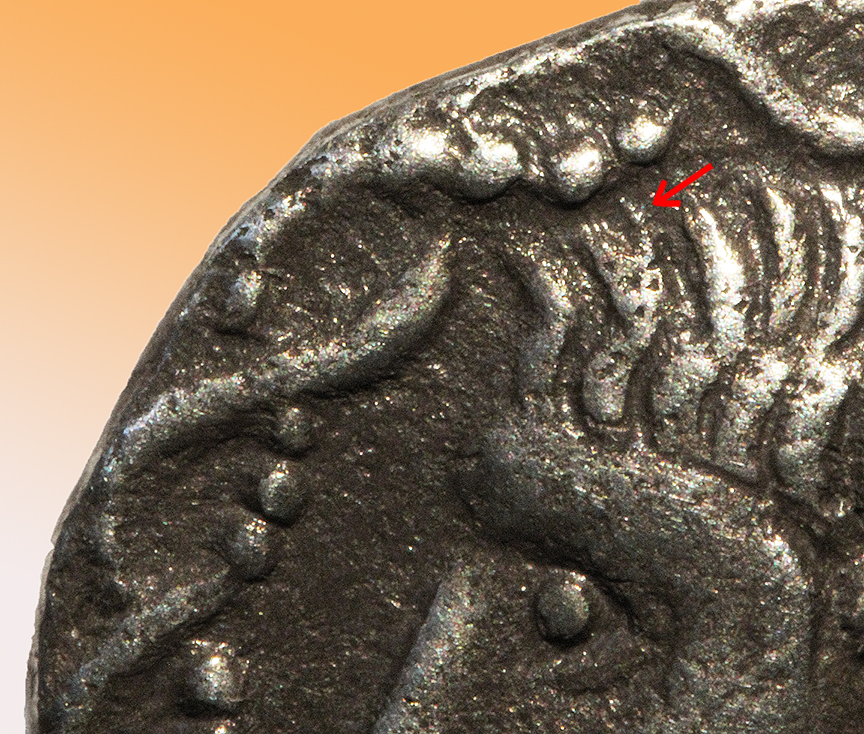
There is a Split End Error on the second lock of hair (arrow). This is a typical die-cutting error of the Haselmere Forger's workshop. (For more about Split End Errors)
Suspected Die-Cutting "Mess"
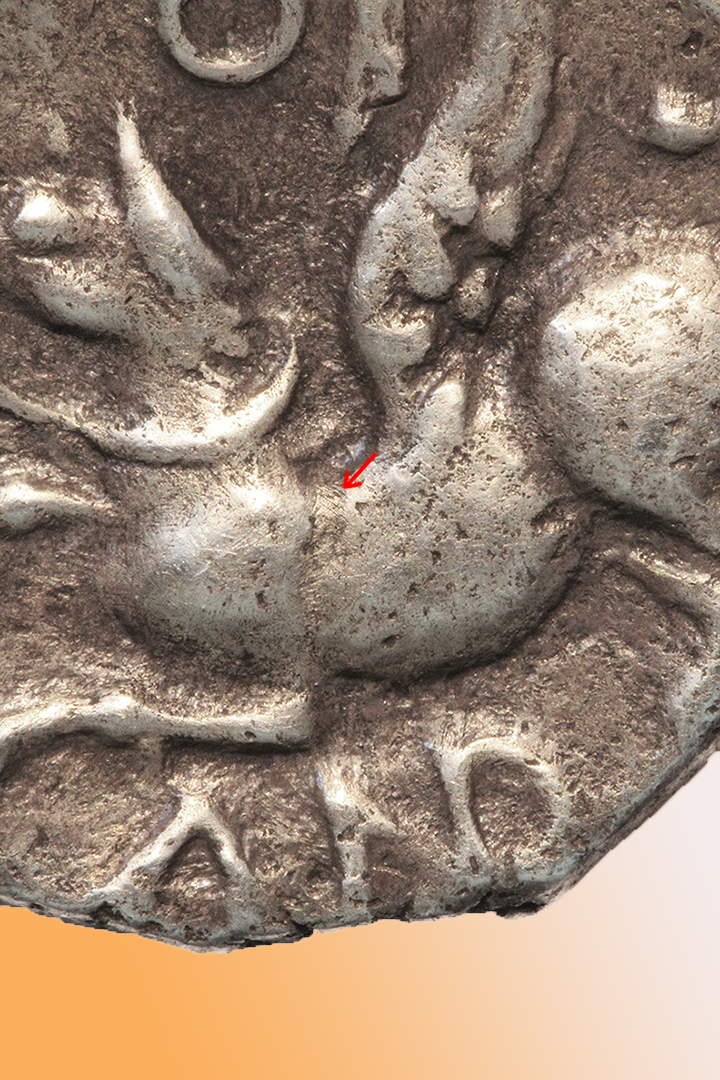
The brown coating fails to cover a die-cutting "mess" on the Pegasus' back (arrow). This cannot be seen in this low-magnification photograph. It can be seen with a 10X loupe, just barely.
Die-Cutting "Mess" Revealed By Stereo Microscope
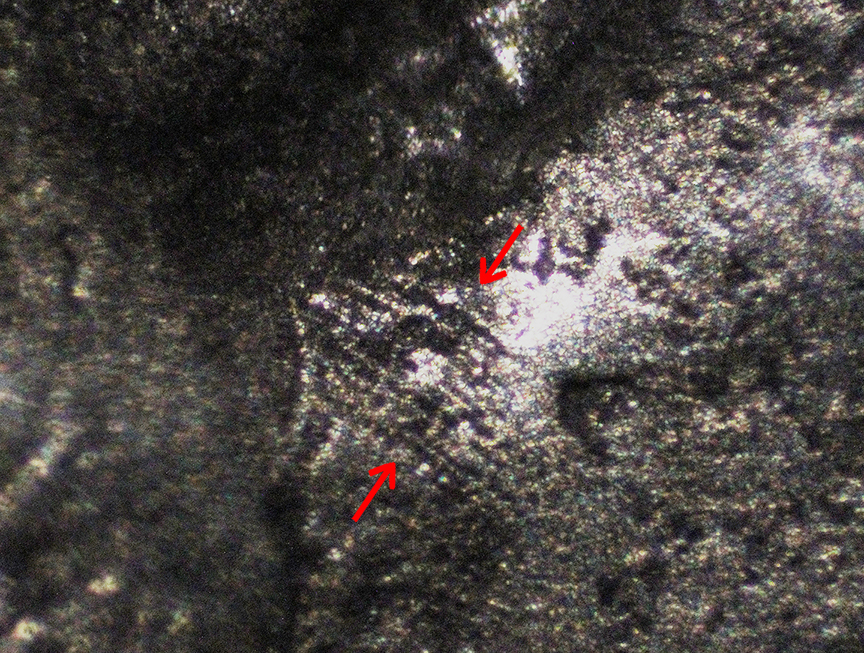
The "mess" is easily seen at 50X with the stereo microscope. It appears as a series of crossed lines (raised lines on the coin), where the die-cutter has tried to smooth the transition on the Pegasus' back from the wing to the shoulder (between arrows).
Haslemere Steps
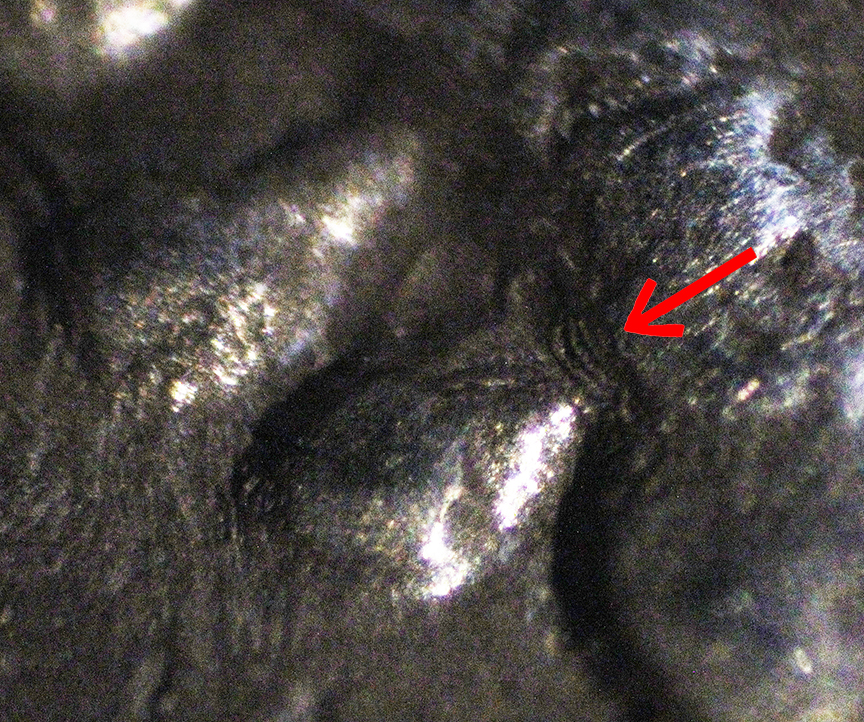
Haslemere Steps appear on the mouth on the obverse (arrow).
Summary
One could choose to ignore any one of these die-cutting errors. But taken in concert, they reveal this coin to be the work of a forger – probably a product of the Haslemere Forger's workshop.
The Haslemere Forger's career began in 1960 and the coin in this article cannot be traced before 2008 – a span of nearly 50 years. This prompts the question whether the Haslemere Forger is a single worker. There are several possibilities:
- There is only one forger, who had a long career.
- The original forger trained one or more apprentices who carry on the fraudulent work.
- The original forger stockpiled a large number of fakes at some time in the distant past and the forger's "runners" continue to work off the inventory.
The last possibility suggests that new examples of the Haslemere Forger's work may continue to appear for a long time to come.
As always, this article reveals neither the full extent nor nature of the forger's mistakes – holding something in reserve to trip the forger up in the future. The Andoco coin is retained by the Author, for future reference.
End
